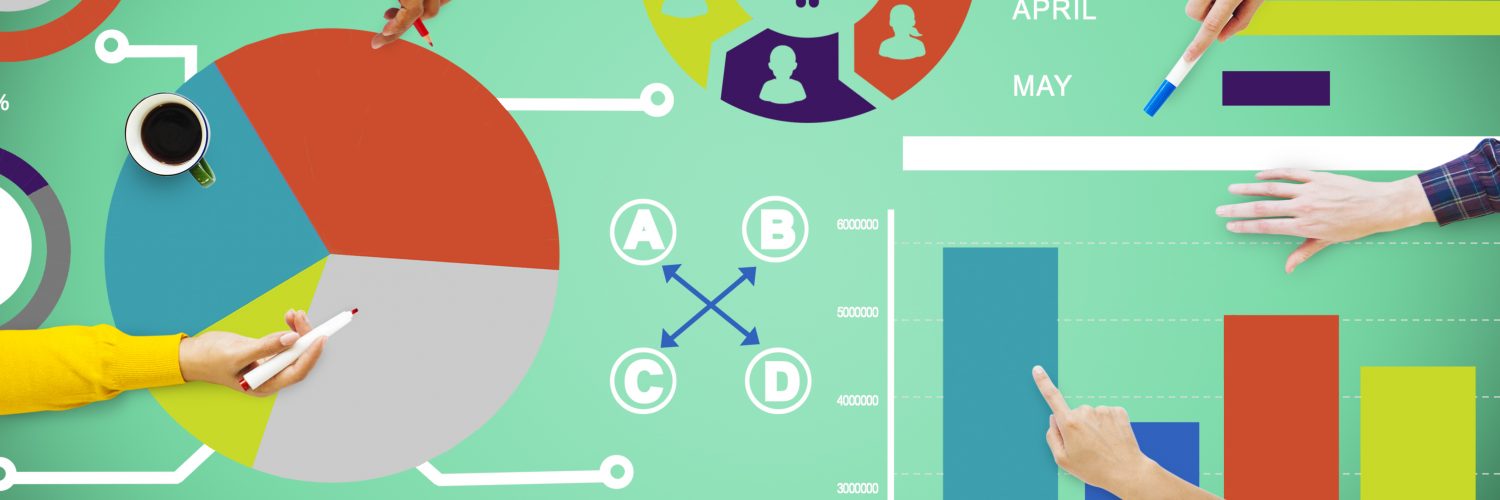B2B eCommerce Trends
B2B eCommerce has rapidly been changing over the past few years, and 2021 is no exception. With the disruption of COVID-19, new trends have emerged, and the eCommerce landscape is transforming. B2B companies are implementing new strategies to adapt to a changing market and take advantage of a growing online customer base, characterized by rising mobile usage, new expectations for personalization and self-service, and increasing demand for digital connectivity. Below are some of the major Market-Driven B2B eCommerce trends of 2021, as well as some key calls to action for B2Bs to optimize their eCommerce strategy.
1) M-Commerce is on the rise:Mobile has continued to transform the B2B landscape, with more and more consumers demanding seamless, aesthetic, and flexible mobile experiences. Rather than simply comparing product offerings and services across businesses in an industry, consumers are increasingly comparing the digital experiences they have had and have come to expect. Google recently partnered with The Boston Consulting Group (BCG) to research how mobile has been impacting B2B customers and organizations. Key data shows that:
Mobile influences an average of over 40% of revenue in leading B2B organizations. 50% of current B2B search queries are made on smartphones, with BCG expecting that figure to grow to 70% by 2020. Daily mobile usage per B2B worker is expected to increase from 2 hours to 3 hours, driven by millennials, Gen Z, and the increasing use of smartphones by older workers. More than 90% of B2B buyers reporting a superior mobile experience claim that they would be more likely to repurchase from the same vendor, while only 50% claim so when reporting a poor mobile experience.
The effect of mobile on B2B eCommerce is expected to continue accelerating, with B2B leaders doubling down on mobile commerce to increase engagement, drive traffic, and boost customer loyalty.
BCG characterizes these trends by the emergence of “a new generation of B2B customers” that “look for the same digital experiences they encounter as consumers”. These individuals have become accustomed to using mobile devices for work, value multitasking across multiple devices, and have shifted away from desktops and laptops in favor of smartphones.
Marketers have previously claimed that there is insufficient research to justify prioritization and investment into mobile experiences, citing low mobile conversion rates and poor mobile marketing performances. In reality, while mobile still accounts for a smaller fraction of aggregate sessions on most eCommerce storefronts, B2B mobile leaders are increasingly incorporating M-Commerce into their marketing mix. This has helped them to develop and bolster existing customer relationships, establish their brand for the consideration of prospective clients, and poise themselves to capitalize on the rapid growth of mobile towards reaping future benefits.
BCG explains how slow-moving companies that fail to build mobile-optimized experiences and improve mobile integration are at a serious risk of being left behind. B2B businesses should avoid succumbing to “Mobile Doom Loop” thinking, signalled by:
Doubts surrounding mobile ROI Fears of mobile underperformance and establishment of a new medium Prioritizing channels with larger contributors to current traffic
As of 2021, mobile has continued to expand and proliferate the B2B eCommerce space, and its growth will likely extend over the coming years. B2B marketers must boost their mobile efforts to capitalize on this rapid trend. Here are 5 calls to action for businesses hoping to accelerate their mobile integration:
Track buyer experiences across media and devices Invest into building visual and frictionless mobile experiences for customers Adapt data collection to a company’s business model and size Increase mobile advertising while adjusting marketing strategies based on results Simply the B2B purchase process on mobile, de-emphasizing text in favor of rich media
2) Customers are showing a preference for Digital Self-Service:
B2B buyers increasingly desire control over their eCommerce experiences, with a strong preference for self-service; seamless shopping experiences in their personal lives have shaped their B2B buying expectations. The COVID-19 pandemic has further pushed B2B sales towards self-service, and research shows that digital self-service will likely remain a dominant element of the B2B go-to-market model.A report published by McKinsey & Company earlier this year detailed results from a global survey, highlighting key takeaways for B2B businesses aiming to adapt their practices in the wake of the pandemic. Results show that:
When asked what kind of interaction was most helpful in choosing a supplier, 47% of respondents preferred some form of online self-service. 25% chose “supplier website”, while 22% selected “online material from supplier”. When asked what ordering method they preferred, 46% of respondents chose “using a supplier’s website”. When asked “How do you currently interact with sales reps from your company’s suppliers during the 4 stages of interaction”, an average of 34% of respondents chose digital self-service for the Research, Evaluation, Ordering, and Re-Ordering stages. In comparison, results for 2020 showed an average of only 29% for self-service across all 4 interaction stages, with a 12% increase for self-service in the Research and Evaluation stages. 83% of B2B decision makers feel that the new selling models emphasizing remote interactions and online self-service are as effective as or more effective than pre-COVID-19 models that prioritized direct interactions. 87% of B2B decision makers believe that these shifts in selling models will likely sustain 12+ months after the COVID-19 pandemic.
The results of the report show that in the post-COVID world, B2B customers are shifting towards digital interactions and self-service as their primary means of researching and evaluating products. For B2B manufacturers, enabling customers to perform tasks such as ordering, checking stock inventory, and paying invoices online has collectively lowered service costs. Digital self-serve and remote channels free up businesses’ CSRs and sales representatives for higher value services. As a result, customer relationships are strengthened further, as organizations can now allocate time and resources for when customers truly need support.
By becoming the new standard, self-service has re-vitalized B2B operations and resource allocation, maintaining its majority hold despite certain geographies now reopening in-person operations and direct sales efforts. Research conducted by Forrester supports and enforces this trend, showing that:
53% of customers prefer to gather information online by themselves 59% of customers prefer not to interact with a sales representative 74% of customers believe that buying from a website is more convenient 86% of customers prefer self-service tools to order, re-order, and check order statuses 93% of customers prefer to buy online when they have decided what to buy
Digital self-service has become the new “normal”, dominating the B2B buyer journey and driving B2B manufacturers towards implementing customer self-service portals. Here are 5 calls to action for B2B organizations hoping to re-engineer their sales efforts towards digital self-service:
Integrate eCommerce catalogs with rich media, including photos, videos, interactive content, product comparison features, and various self-service tools to support the research and evaluation stages. Provide responsive interfaces and intuitive commands that help buyers save time during the ordering and re-ordering stages. Implement customer self-service portals with the optimal ERP-integrated solution, enabling post-order care that supports independent tracking, invoices, and payment. Adopt an Agile approach and apply it to self-service digital solutions, empowering adaptability, flexibility, and speed when the digital transformation process. Incorporate the voice of the customer while developing self-service digital solutions, gathering feedback to address customer needs and realize requirements prior to rollout.
3) Omnichannel Experiences are the new standard:
When given the choice of in-person, remote, and e-commerce channels, buyers have expressed the desire for all three. Omnichannel retailing has become a cornerstone of global B2B sales, establishing itself as the new standard, not the exception.
The COVID-19 pandemic has anchored omnichannel interactions in B2B sales, with businesses realizing the importance of omnichannel to centralize various sales channels and customer relationships together. The rise of M-Commerce and mobile, increased social media engagement, and consumer’s growing affinity for self-service have all emphasized the importance of B2B businesses establishing a cohesive omnichannel experience.
McKinsey published a report earlier this year highlighting the growing impact of omnichannel on B2B sales. Data shows that:
Approximately 80% B2B leaders say that omnichannel is as or more effective than traditional methods 83% of B2B leaders believe that omnichannel selling is a more successful way to prospect and secure new business than traditional sales approaches 85% of US B2B leaders claimed that new omnichannel-based sales models were equally as effective or more effective than previous sales models, indicating a 43% increase compared to the previous year 20% of B2B buyers said that they would be willing to spend more than $500,000 in a fully remote/digital sales model 11% of all B2B buyers would spend more than $1 million in a fully remote/digital sales model 64% of B2Bs intend to increase the number of hybrid sellers over the next six months 85% of B2Bs expect hybrid sellers will be the most common sales role in their organization over the next three years
Omnichannel is only expected to grow over the coming years, already proving to be as or more effective than traditional sales methods. This pattern has held true across various geographies, industries, and markets, prominent in countries such as South Korea, Spain, China, and the USA. B2B leaders are confident that investing in and expanding on omnichannel experiences will lead to greater success in a post-pandemic world, reflected by increased expenditure in IT hardware, software, and digital marketing, all directed at optimizing omnichannel retailing.
As the rate of digitization increases across various industries, it is imperative that B2B manufacturers boost their digital infrastructure to keep up with the trend towards omnichannel. McKinsey’s report also highlights two key go-to-market changes that are driving the hybridization of sales models in B2Bs:
First, although 95% companies expect to be able to connect with customers in physical locations by the beginning of 2022, only 15% of B2Bs expect in-person sales meetings to be the norm. Second, with buyer interest and comfort in digital sales rising, e-commerce has become the most popular route to market for B2Bs, with 41% of leaders saying that it is their most effective sales route.
To effectively capitalize on the expansion of omnichannel and maximize its power, B2B organizations must first overcome some key challenges and pain points. Investment into effective infrastructure, facilitating hybrid selling, and adapting to remote operations are all important steps. Here are 3 calls-to-actions:
Make remote interactions feel intimate, genuine, and effective, providing proofs of concept, digital demos, and clear visual representations that provide an equal or superior level of insight to physical walk-throughs. Innovate sales approaches using customer feedback, data, and consumer insights to ensure that digital transactions are not a zero-sum game Adopt an Agile approach to facilitate quick and improved pivoting of resources
4) B2Bs are leveraging Marketplaces:
Marketplaces have been a major part of B2C eCommerce sales for years, but rapid digitization, changes in consumer preferences, and the effects of COVID-19 have led to accelerated B2B eCommerce sales via online marketplaces. In fact, B2B marketplaces are one of the fastest growing eCommerce channels, with digital sales expected to more than double over the next year.
Marketplaces have helped customers to save time and money during the Research and Evaluation stage of their buyer journeys and find a greater variety of solutions to satisfy broad needs. Furthermore, marketplaces have enabled B2B customers to enjoy streamlined shopping experiences that facilitate comparison shopping, a greater sense of security, and an overall superior user experience.
B2B marketplaces have exploded in popularity, and key analysis from a report published by Digital Commerce 360 highlights the effects of this trend:
There are now 250 B2B marketplaces, in comparison to only 70 B2B marketplaces two years ago. Collective digital sales on commercial trading platforms and industry marketplaces will grow by 130% to $56.5 billion. Marketplaces will account for 3.5% of all business eCommerce sales.
Furthermore, Gartner predicts that over 15% of medium-to-high-gross eCommerce brands will have deployed their own marketplaces by 2023, and 70% of all marketplaces launched by 2023 will support B2B transactions. Demand for B2B-ready marketplace management software is expected to rapidly increase in line with these trends, and it is vital that B2B manufacturers take advantage of marketplaces to further their sales.
Here are 3 calls-to-action for B2B organizations looking to leverage marketplaces:
Find and implement an effective B2B marketplace management software to facilitate the use of and expansion into digital marketplaces Use marketplaces to build relationships with prospective clients, improve personalization efforts, and support customers during their buyer journey Find the right marketplaces and establish your brand identity early, helping your business gain a competitive edge, differentiate your products and services, and improve your marketing efforts
2021 and Beyond:B2B eCommerce showcased new opportunities and high growth in 2021. These are just some of the market-driven trends that represent how B2B companies are adapting to the changes caused by COVID-19, providing customers with fresh digital experiences, and leveraging new technology to deliver on buyers’ expectations. Check out our articles on the Biggest Technology-Driven and Biggest Customer-Driven B2B eCommerce Trends of 2021 to learn more about how 2021 has solidified B2B eCommerce in various industries and how B2Bs can form a new path forward.




![Slimme linkbuilding-strategieën om autoriteit & vertrouwen op te bouwen [stappenplan]](https://www.pharmamarketeer.nl/wp-content/uploads/2025/04/big-data-domain-web-page-seo-concept-2025-02-10-05-57-46-utc-1-385x300.jpg)





